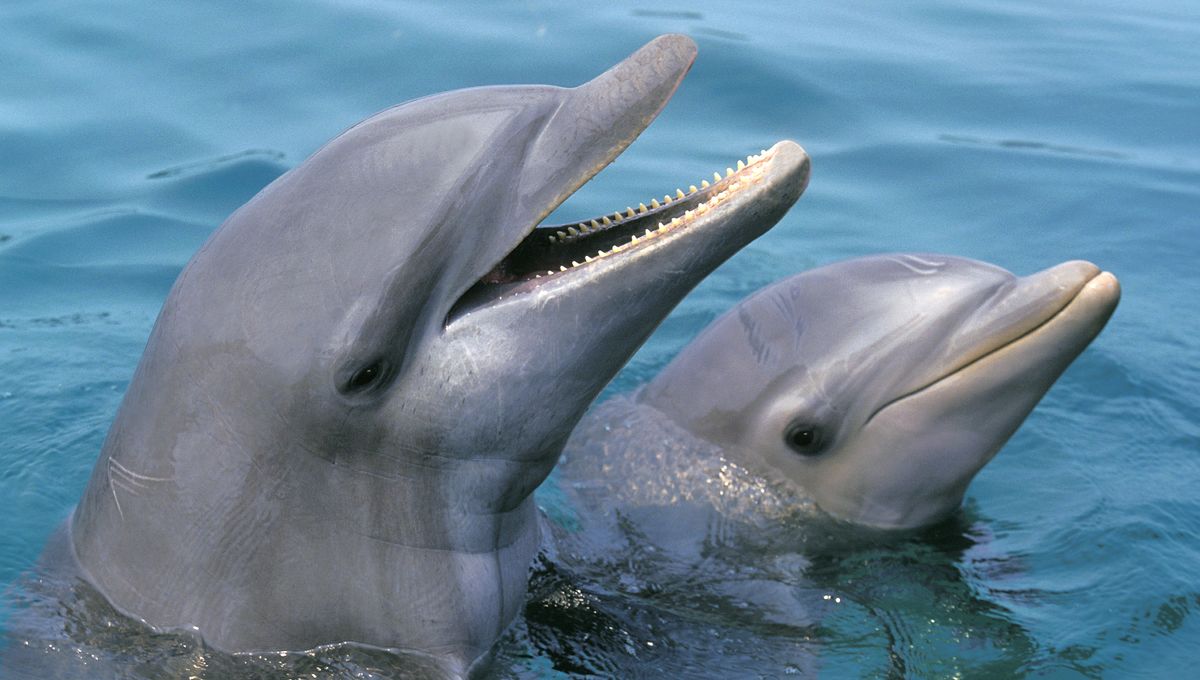
Dolphins might have a reputation for being playful, friendly creatures, but best believe they aren’t always like that – something that was made all the clearer last week when a group of people on a wildlife-watching trip in Cardigan Bay, Wales, were witness to four bottlenose dolphins hunting down and killing a young common dolphin.
“While conducting a boat survey on behalf of the Sea Watch Foundation aboard a dolphin spotting wildlife tour we observed intense splashing and dolphin activity,” explained Dylan Coundley-Hughes, an intern with the Sea Watch Foundation (SWF) who captured footage of the incident, in a statement sent to IFLScience. “At first, we saw something flung into the air and suspected a porpoise, but to our disbelief, it was a common dolphin calf, making this encounter an interspecific infanticide.”
While attacks by bottlenose dolphins on other bottlenoses and porpoises – dolphin-like marine mammals that belong to the same superfamily as dolphins – had been spotted in the bay before, this was the first time that aggressive behavior directed towards a common dolphin had been seen there.
Bottlenose dolphins are known to be fairly aggressive towards other species
Katrin Lohrengel
“I was filming for a personal documentary at the time and couldn’t believe I had captured such a rare behaviour between different dolphin species,” said Coundley-Hughes. “It was both remarkable and heartbreaking to witness.”
While this specific incidence of aggression might’ve been rare to witness, hostile behavior between dolphin species in general isn’t necessarily surprising, Katrin Lohrengel, who runs the Sea Watch Foundation’s Cardigan Bay Monitoring Project, told IFLScience.
“Bottlenose dolphins are known to be fairly aggressive towards other species; they are known to kill harbour porpoise in the UK and have been reported displaying aggressive behaviour towards other species such as Risso’s dolphins, striped dolphins and common dolphins in other parts of the world such as the Mediterranean. Killer whales, that are part of the dolphin family, actively predate on smaller dolphin species.”
Though uncommon, bottlenose dolphins are also known to have killed their own young, called intraspecies infanticide. “As bottlenose dolphin calves stay with their mother for approximately three years after they are born and require extensive maternal care, it is thought that infanticide by males occurs because they are trying to maximise their chances of mating; a female without a calf is more likely to mate than one who is caring for one,” explained Lohrengel to IFLScience.
The reasons for interspecies infanticide on this occasion, however, are less clear.
In fact, Professor Peter Evans, the director of Sea Watch Foundation, told IFLScience that it “should not necessarily be called infanticide.”
“In the case of porpoises, most of the ones killed are adults. The common dolphin killed on this occasion was a juvenile but not an infant/calf,” Evans explained.
“There is the possibility that bottlenose dolphins are mistaking other smaller species as bottlenose dolphin calves but there is no firm evidence this is the reason, and for the most part, would be surprising because cetaceans rely heavily upon acoustics to identify other individuals and particularly their young (through signature whistles). They can readily discriminate their own young from others of the same species let alone other species,” continued Evans.
“It is more likely that the interspecific aggression occurs when the two species encounter one another either in pursuit of similar prey (their diets overlap) or maybe just in the same space.”
We are seeing common dolphins occurring more frequently inshore in Cardigan Bay in recent years
Professor Peter Evans
What might make the motive behind this particular incident clearer is a postmortem on the common dolphin calf, which is due to be carried out by the UK Cetacean Strandings Investigation Programme (CSIP).
In the meantime, it’d be fair to wonder whether or not this behavior might spread to other bottlenose dolphins in the bay – after all, dolphins learn from each other, and orcas, their fellow cetaceans, are well-known for picking up on a trend.
“There may be some spreading between individuals of behaviours such as witnessed the other day,” said Evans, “but probably not on a big scale. Common dolphins do not usually come so close inshore and so the opportunity for close contact with bottlenose dolphins is rare. They also are usually in large schools which affords protection.”
“That said, we are seeing common dolphins occurring more frequently inshore in Cardigan Bay in recent years, and they may be doing so in pursuit of small shoaling fish that are also taken by bottlenose dolphins. Thus, we cannot exclude the possibility of more attacks like this one occurring. However, as with porpoises, they will quickly learn to avoid the danger and keep away from close proximity to bottlenose.”
Source Link: Rarely Seen “Interspecific Infanticide” By Dolphins Caught On Camera Near Wales